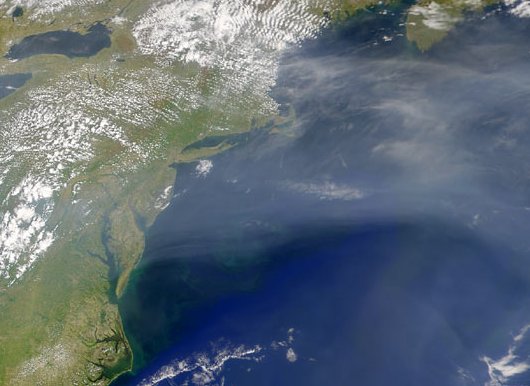
Why the Blue Ridge is now lost in a gray haze - industrial pollutants and particulates, blowing over the Atlantic Ocean
Source: NASA

Why the Blue Ridge is now lost in a gray haze - industrial pollutants and particulates, blowing over the Atlantic Ocean
Source: NASA
The Virginia Department of Environmental Quality (DEQ) enforces the Clean Air Act in Virginia, using authority granted by the Environmental Protection Agency. Since 1972, that Federal agency has been required to approve Virginia's State Implementation Plan (SIP). The State Implementation Plan must demonstrate how Virginia will reduce air pollution to levels at or below the National Ambient Air Quality Standards (NAAQS).
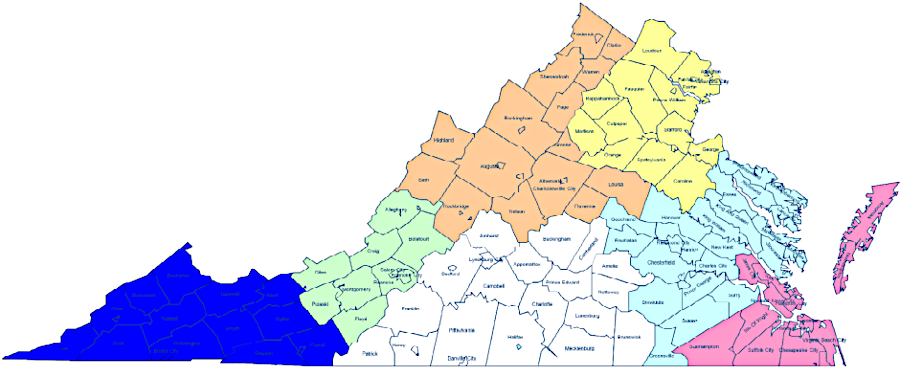
Virginia has seven Air Quality Control Regions
Source: Virginia Department of Environmental Quality (DEQ), Air Quality Monitoring Network Assessment (Figure 1.3.3)
The standards have been revised occasionally. In 2015, the standard for ground-level ozone (O3) was redefined so it was measured over an eight-hour period rather than just one hour. A region could meet the new standard if the fourth-highest daily maximum measurement, averaged across three consecutive years, did not exceed 0.070 parts per million (ppm).2
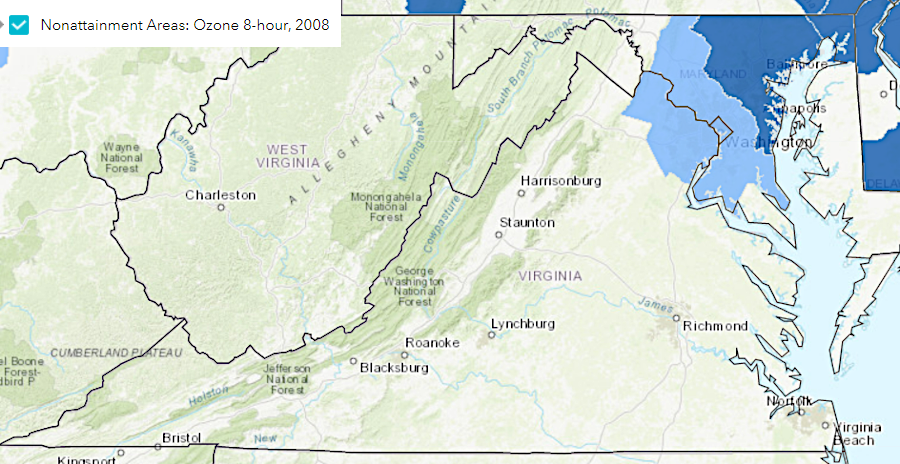
Northern Virginia is the only part of Virginia that is a nonattainment area for ozone
Source: Environmental Protection Agency (EPA), Air Data Air Quality Monitors
Ozone is a pollutant at ground level, damaging lung cells. Sunlight trggers chemical reactons in nitrogen oxides (NOx) and volatile organic compounds (VOCs) o create ozone at ground level.3
High in the atmosphere, however, ozone provides a protective layer blocking ultraviolet radiation from the sun that would damage DNA in cells. Chlorofluorocarbons (CFCs), hydrochlorofluorocarbons (HCFCs), carbon tetrachloride, and methyl chloroform used in the 1900's leaked and were discharged from used equipment, and rose up into the stratosphere 9-18 miles above the surface of the earth. High altitude air currents concentrated chlorine and bromine atoms abve the South Pole, where in chemical reactios they broke apart ozone molecules.
Atmospheric measurements in the 1980's from research stations in Antarctica identfied an unnatural reduction of the ozone in the stratosphere in the winter, using measurements taken since the 1957 International Geophysical Year. An "ozone hole" was developing through which damaging UVB rays could reach the earth's surface.
Scientific concern about ozone-depleting substances was followed by a rare international consensus to take action. All industrialized nations ratified the 1987 Montreal Protocol to limit production of ozone-depleting substances. In 2018, a United Nations report projected that natural levels of ozone would be fully restored within another 50 years. The 2022 United Nations update noted that:4
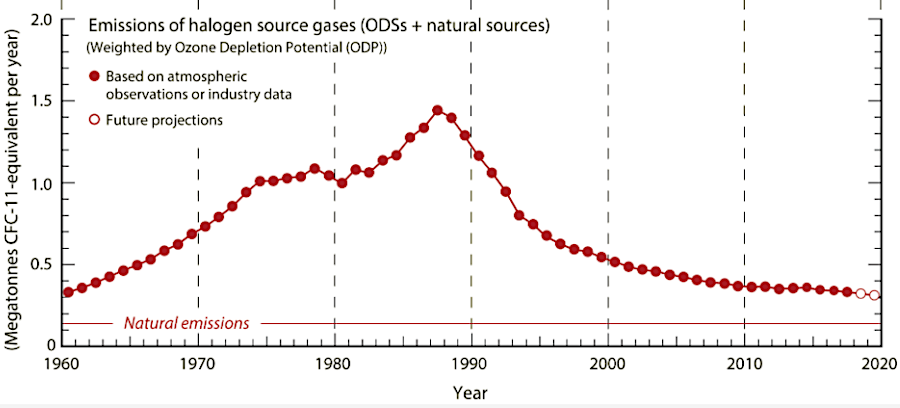
international cooperation, starting with the Montreal Protocol in 1987, reduced the threat of an "ozone hole" by limiting production of ozone-depleting substances
Source: World Meteorological Organization, Twenty Questions and Answers About the Ozone Layer: 2018 Update (Figure Q0-1)
In 2022, the US Congress sought to establish without question that carbon dioxide emissions were also regulated under the Clean Air Act. The Inflation Reduction Act defined as an "air pollutant" the carbon dioxide (CO2) emissions generated by burning of fossil fuels. The US Supreme Court had recently ruled in West Virginia vs. E.P.A that the Clean Power Plan proposed by President Obama exceeded the authority of the Federal government to set the proposed emission caps. The new law in 2022 was designed to grant the authority so clearly that the court would not block future regulations limiting greenhouse gas emissions.5
In 1999, the Environmental Protection Agency (EPA) issued the Regional Haze Rule to improve air quality in national parks and wilderness areas. Two sites in Virginia qualify for the extra protection, Shenandoah National Park and the James River Face Wilderness Area. The Federal agency rejected in part Virginia's 2012 State Implementation Plan (SIP) to meet the 2010
Sulfur Dioxide and 2012 Fine Particulate Matter Standards. Virginia submitted an amended plan in 2015, and the Environmental Protection Agency granted full approval in 2018.Acid Rain in Virginia
Light Pollution and Dark Skies in Virginia
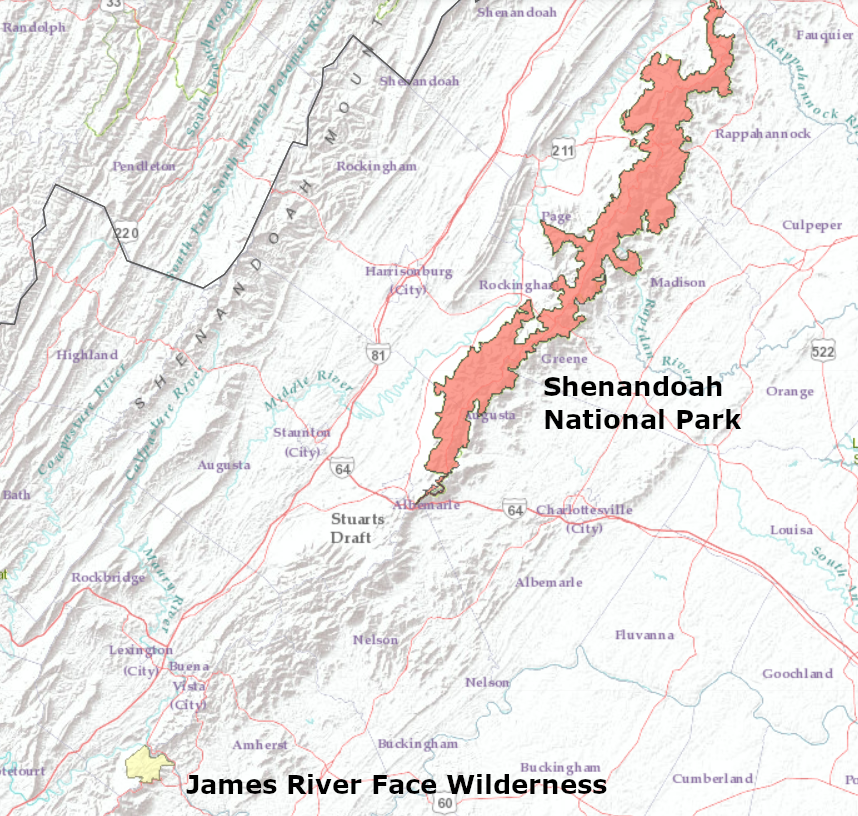
there are two Mandatory Class 1 Federal Areas in Virginia
Source: Environmental Protection Agency (EPA), Air Data Air Quality Monitors
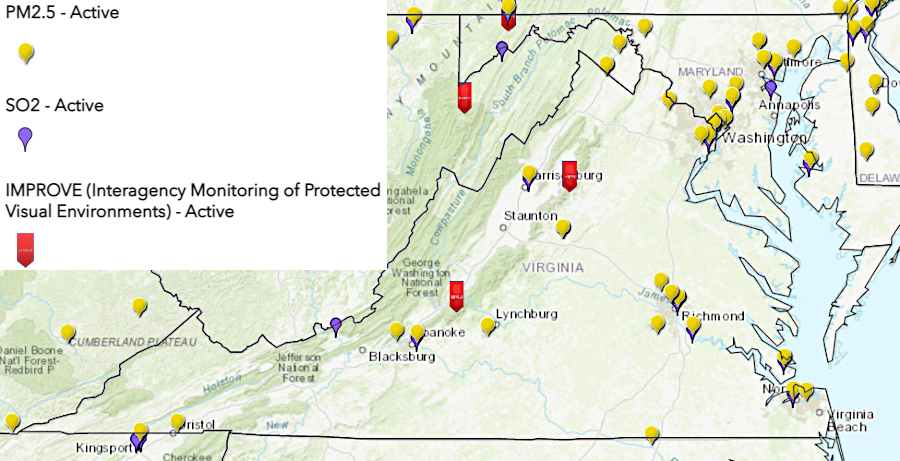
in 2022 air quality monitors were located across Virginia, with two for haze near the Mandatory Class 1 Federal Areas
Source: Environmental Protection Agency (EPA), Air Data Air Quality Monitors
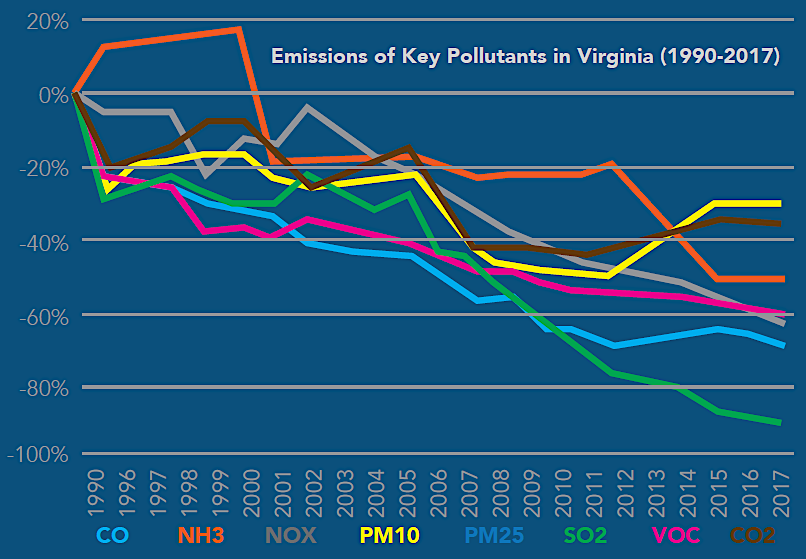
between 1990-2017, air quality improved substantially in Virginia
Source: Consumer Energy Alliance